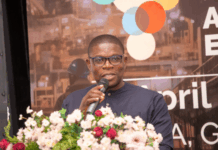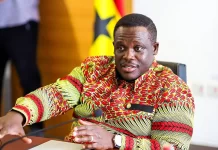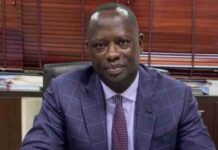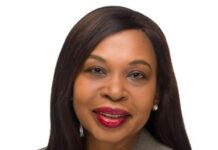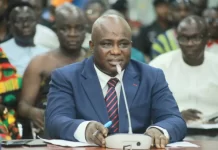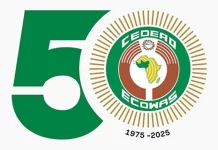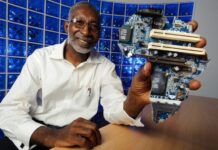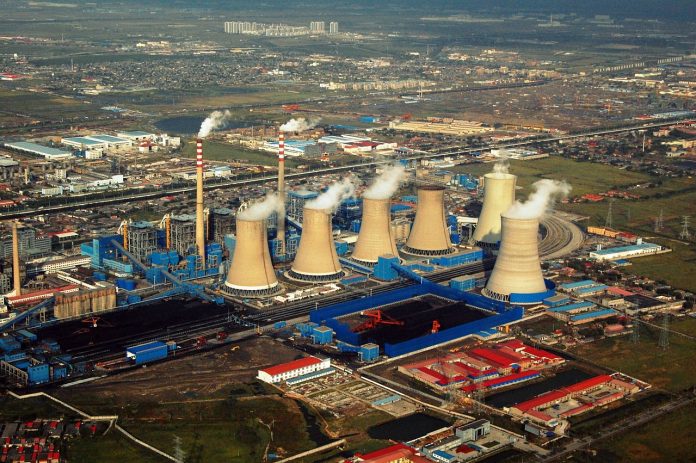
Jon Marks and David Slater of Africa Energy Live Data, draw on the company’s database of over 5,300 projects to review the state of Africa’s energy market.
First the good news. Analysis of the 5,300-plus operating, under-construction and planned generation plants now recorded by African Energy Live Data shows installed capacity on the continent will increase by almost 50% from 2018 to 2022, should all announced commercial operations dates be met. The majority of the growth will come from gas and liquid fuel-fired projects, but investment in renewable energy (RE) is increasing quickly.
It is of little surprise that Africa’s largest economies and most populous countries have the largest amount of power generation under construction. With the exception of Ethiopia – which is developing the 6 GW Grand Ethiopia Renaissance Dam (Gerd), East Africa has relatively few megawatts under construction, particularly in troubled areas such as Somalia and South Sudan. However, the region’s ambitious transmission plans point to considerable potential for power trading and, away from established grids, East Africa has proved the crucible in forging innovative off-grid solutions, as it has for other transformative technologies such as mobile banking.
Despite significant gas and hydroelectric power (HEP) resources available in West Africa, of the 6,838 MW under construction in the region, 4,102 MW is taking place in Nigeria. Gambia, Guinea-Bissau, Sierra Leone, Liberia and Burkina Faso are witnessing very little progress and have seen little new capacity come online in the past few years.
South Africa and Angola account for 92% of new generation being built in Southern Africa. In North Africa, Egypt and Algeria also account for 92% of the under construction megawatts, although Morocco and Tunisia also have major renewable energy (RE) and thermal construction projects.
Almost half of the under-construction power generation is located in North Africa (18.5 GW in Egypt and 11.4 GW in Algeria). West, East and Southern Africa have more modest levels of new capacity being built, while only 814 MW is recorded as under construction in Central Africa.
African Energy Live Data is an innovative and interactive data platform that allows investors and developers to identify and evaluate power projects across the continent. The platform contains detailed information on more than 5,300 projects and 4,500 organisations as of May 2018, with data points on everything ranging from fuels and technology to shareholders, financing and background information. Live Data’s sophisticated Data Tool aggregates project data to provide insight into the structure and outlook of the power sector at a country, regional and continental level.
Renewables breakthrough
Tumbling prices for solar and wind technologies, coupled with enthusiastic support from programmes such as the World Bank Group’s Scaling Solar and any number of bilateral initiatives from RE enthusiasts such as Germany, have contributed to ever more economies turning to RE solutions. Should the pipeline recorded by Live Data be realised, the share of renewables in the energy mix across Africa will grow from 21% by end-2018 to 25% in 2022.
Broken down regionally, the share of renewables (which includes HEP) in Central Africa will increase from 64.4% to 68.8%, in East Africa from 59% to 65%, in Southern Africa from 25.5% to 28.1%, and in West Africa from 20.4% to 25.9%. RE as a share of the gas-dependent North African electricity supply industries (ESIs) will only moderately increase, from 8.7% in 2018 to 10.2% in 2022.
Transition fuel
Gas-fired projects have an important role to play across the continent, judging by Live Data’s figures, which lists 313 operating gas-fired plants, with 84.3 GW of installed capacity; another 39 plants are under construction (with total 32.9 GW capacity) and 156 are planned (66.9 GW). The majority are utility-scale facilities supplying national grids: Live Data records 206 of these as operational (75.5 GW), 33 under construction (28.7 GW) and 119 planned (58.1 GW). Such numbers give credence to arguments that natural gas, monetised from domestic reserves that in the past were often flared or imported as liquefied natural gas (LNG) or by pipeline, is the “transition fuel”, able to balance the energy mix as oil- and coal-driven economies are replaced by RE solutions.
Unsurprisingly, the major natural gas-producing regions of North and West Africa lead the way, despite concerns whether major producers such as Algeria can meet fast-rising domestic demand while continuing to export to Europe and other major markets. Many analysts believe the current global gas glut will be over by 2025, adding to pressure on markets. Part of the sales pitch for Russia’s new Nord Stream II pipeline is that imports from North Africa and Norway will slump in the period to 2025, leaving Europe even more dependent on Russian gas.
Nigeria’s problems meeting domestic demand for gas continue to undermine its ability to boost grid power supply. Nigeria’s installed on-grid capacity now stands at 13.1G MW, according to African Energy Live Data, of which 10.7 GW (82%) is gas-fired and 2.4 GW HEP. Live Data records some 6.5 GW of on-grid capacity under construction, including 2.4 GW of gas-fired, 3.8 GW of HEP, 10 MW of wind and 215 MW of diesel. But while some numbers are improving, the overall situation seems as precarious as it did when the Nigerian ESI’s elegantly structured privatisation was rolled out in 2013. Nigerian cities are expected to continue to hum with the sound of privately owned diesel generators for years to come, even if rooftop solar, mini-grids and other solutions gather momentum.
But growth is expected in gas-to-power (GTP) schemes across Africa. As African Energy observed following the 2017 Africa Investment Exchange: Gas event, floating LNG has become “the feedstock of choice” for the growing number of consumers exploring import options. In Southern Africa – where Live Data records 11 plants as operating (with 958 MW capacity), three under construction (960 MW) and 16 planned (4,166 MW) – Cyril Ramaphosa’s presidency is expected to fast-track South Africa’s stalled gas independent power project (IPP), which ran contrary to ex-president Jacob Zuma’s favoured nuclear power plans.
The region will receive a boost from decisions on huge gas developments offshore Mozambique and, perhaps eventually, Tanzania.
According to Mozambique’s National Director of Energy, Pascoal Bacela, the country plans to develop three projects including fertiliser, gas-to-liquids and a 250 MW GTP plant from Anadarko Petroleum Corporation’s share of the 200 trillion cubic feet Rovuma Basin reserves. Bacela said recently that “by 2022 the southern part of Mozambique will have installed capacity of more than 800 MW all run by gas.”
Gas can fuel generation away from national electricity grids. Live Data records 49 operating off-grid plants fuelled by gas (with 1.4 GW installed capacity); one 48 MW plant is recorded as under construction and at least eight more are planned (221 MW). Also growing is “embedded power”, by which generators sell electricity to a third party which is also connected to a national or regional grid. Live Data records 29 embedded schemes as operating (1.9 GW), one under construction (140 MW) and 12 planned (which would supply nearly 3.2 GW capacity).
Hydrocarbons majors such as BP, Engie, Eni and Royal Dutch Shell are piling into RE projects, persuaded by the ever more favourable economics of solar, wind and (eventually) storage. But while their traditional crude oil and products businesses are under pressure, they are all focused on developing gas. According to BP’s head of international David Knipe, gas will represent 60% of the UK major’s portfolio by 2025; six of the seven major projects BP completed last year were gas-related.
Government planners agree. Timetables may have slipped, but Morocco’s ambitious plans to import 5bn–10bn cubic metres a year of LNG – to supply new combined cycle gas turbine units and industrial users, while also balancing a grid slated to receive ever larger amounts of RE – highlight the transition fuel’s appeal. Development of the Tortue field off Mauritania and Senegal points to monetisation of a gas field that might not previously have been exploited. Much of that gas is likely to be exported as LNG, but a not insignificant amount could end up supplying GTP schemes in the region.
In many countries progress on new gas-fired units is slow. Outside North Africa – where Algeria’s Sonelgaz is busy building new CCGT units with GE and Siemens – few projects came online 2017 – the 40.29 MW capacity Kuvaninga gas plant in Mozambique being an exception. Live Data records 18 gas-fired projects coming online in 2016 (with total 6.1W capacity), including the 1.2 GW 6 October Gas LFO I-II in Egypt.
Other issues can upset plans. According to Oxford Institute of Energy Studies distinguished research fellow Jonathan Stern, viewed from Europe, a majority of opinion outside the industry fails to see gas as the “transition” or “destination” fuel. Rather, “gas is still a fossil fuel and CCS [carbon capture and storage] is not making much progress… Methane emissions are a serious problem,” the veteran academic analyst said. Imported gas was linked to energy insecurity and most projects “lack of an employment connection”.
Stern also observed that obtaining cooperation along the value chain can be “very difficult, if not impossible, given differing commercial interests”.
Harnessing natural gas may not always have the answer, and Stern raises undoubted concerns for developed economies and emerging markets. But such issues need not derail well-crafted projects – provided the economics of natural gas and strategic planners priorities’ are properly aligned.
Global support
All involved say the private sector needs to be more involved. To achieve this will require billions of dollars. With over 5,300 operating, under-construction and planned generation plants now recorded in the database, African Energy Live Data suggests a potentially vibrant continental ESI is developing. However, project-by-project analysis points to a more complex situation in which all too many IPPs and other schemes fail to leave the drawing board as issues such as lack of cost-reflective tariffs or spotty governance complicate otherwise worthwhile projects. The sort of IPPs, merchant power and other commercially viable schemes that have become the norm in large parts of Asia, Latin America and emerging Europe, remain the exception in state-dominated African ESIs.
The situation is slowly improving with substantial efforts to tackle governance shortfalls and other chronic weaknesses. This is reflected in the ever more expansive support for reform and model projects by the World Bank, African Development Bank and other multilaterals, and bilateral initiatives such as the US’s Power Africa – whose deployment of transaction advisers in markets with huge potential but often laggardly administrations provides an illuminating example of what can be done.
All involved say the private sector needs to be more involved. To achieve this will require billions of dollars – and even then, many national grids cannot be expected to reach large swathes of rural (and even peri-urban) populations for decades – cynics say if at all. It is for this reason that off-grid initiatives have flourished, and can be expected to draw in more serious investment still, as private enterprise – from the smallest community initiatives to big international private equity investors – brings electricity to communities and businesses state utilities have failed to serve.
A question of access
It is against this background that the global campaign to prove vulnerable and marginalised communities with access to sustainable and affordable cleaner energy has gained considerable momentum in the past decade. The Africa–EU Energy Partnership (AEEP)’s “political target” of giving electricity access to 100m more Africans by 2020, set in 2010, was exceeded by mid-decade. The United Nations’ Sustainable Energy for All (SEforAll) initiative should achieve its target of pulling 1bn people worldwide out of energy poverty by 2030; some 500m of these people live in sub-Saharan Africa (SSA).
The targets have piled up as initiatives have proliferated in the last decade, led by the UN’s Sustainable Development Goals (SDGs), established in September 2015, which commit the global community to “ensure access to affordable, reliable, sustainable and modern energy” by 2030. But for all the progress expected towards meeting this target, the end result is likely to remain elusive, both in terms of providing secure grid and offgrid (distributed) electricity and in giving access to access to clean fuels and technologies for cooking across SSA (access to electricity is close to universal in most of North Africa).
Demographics, as much as the mobilisation of finance and application of appropriate technologies, is a critical variable in making these calculations: SEforAll data show an estimated nearly 97m more Africans gained access in 2010–14 alone, but during that period the continent’s population increased by more than 110m.
Data for the increase in access to clean fuels and technologies for cooking is alarming: only around 31m more Africans gained access in 2010–14, according to SEforAll data, while some 850m people remain without access to clean cooking in SSA, out of 2.3m worldwide.
The greatest rates of progress are being made in Asia; SSA remains reliant on charcoal and other biomass for cooking, along with other highly polluting fuels such as kerosene, which is widely used in Nigeria and Kenya. The average rate of access to clean cooking across the continent in 2014 was a meagre 26%. This compares unfavourably even with access to electricity, which in the average African country is around 46%.
According to the International Energy Agency (IEA)’s Energy Access Outlook 2017, over 90% of the SSA population – some 780m people – rely on solid biomass for cooking. A focus on clean cooking is essential to counter the negative impact of “traditional” techniques on health, female productivity, fragile environments and other critical social indicators. But Africa’s demographic time bomb packs a much greater punch than access and clean cooking campaigners can muster. The IEA’s figure of the 780m Africans who rely on solid biomass for cooking is nearly 50% higher than in 2000. And the Paris-based agency forecasts the number of people without access to clean cooking growing to 910m by 2030, reflecting the impact of population growth.
The good news is services are improving across SSA, in terms of grid connections, volumes of electricity generated and the increased application of affordable RE and distributed technologies. “From 2000 to 2016 nearly all of those who gained access to electricity worldwide did so through new grid connections, mostly with power generation from fossil fuels,” the IEA observes. But over the last five years, RE, off-grid and mini-grid systems have started to gain ground in Africa – where RE has provided 34% of new connections since 2012, and off-grid and mini-grid systems 6% – “and this shift is expected to accelerate”.
Countries that have made strong efforts to increase access include Côte d’Ivoire, Ethiopia, Ghana, Kenya, Sudan and Tanzania, the IEA says. By 2030, RE is expected to power over 60% of new access, in a fast-changing environment where “off-grid and mini-grid systems provide the means for almost half of new access, underpinned by new business models using digital and mobile technologies.”
The spread of more efficient end-user appliances and innovative business models are having an impact, leading the IEA to conclude that “this combination of factors is set to transform the energy access landscape in the years to come, especially in rural areas, where decentralised systems are likely to provide the most cost-effective solutions for a majority of those who gain access.”
The shift towards decentralised systems is especially good news on a continent where the average difference between urban and rural electrification rates is more than 40%. Further, a boom in solar home systems and other consumer-focused technologies could be a boon for job creation and entrepreneurship – as that other “disruptive” technology, mobile telecommunications, has proved.
These trends will help to stabilise populations in economies where any number of reforms have so far failed to keep pace with demographic growth. Even so, over 600m Africans could still be deprived of access to electricity come the global initiatives’ target year of 2030, reflecting the challenge demographics pose to planners. Live Data shows a lot more generation capacity will come into service in the next decade. But whether construction can hope to keep pace with demand is less certain.
By Jon Marks





